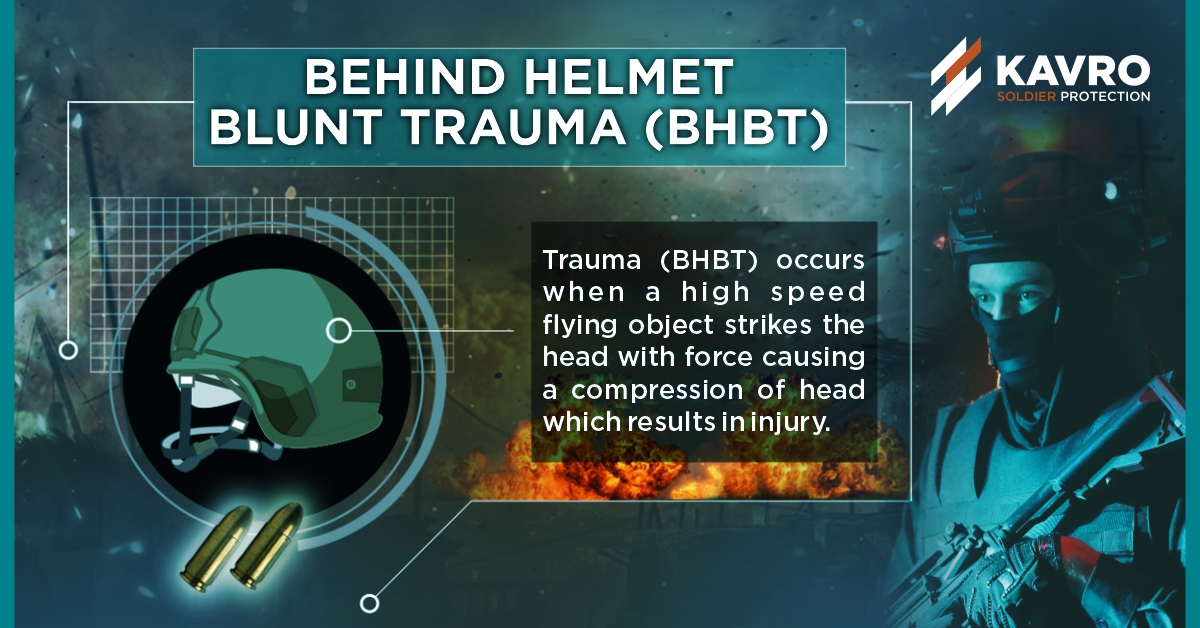A high percentage of injuries occurred on a battlefield are head wounds. During world war II, the most prominent threats are from fragmentation and bullet penetration. While during the Iraq conflict half of the soldiers who were injured, experienced blast exposure, and around 75-80% of injuries were caused by secondary fragments. Blunt trauma is caused by translation from the blast waves, vehicle crashes, etc, and results in a back-face deformation in a helmet. In continuation of our previous article ‘understanding the importance of head protection’, here we will discuss behind helmet blunt trauma (BHBT).
To fight fearlessly, confidence in head protection is a vital factor in a soldier’s ability. Despite a soldier wearing a ballistic helmet for his protection in combat operations, he is still exposed to various threats and can be injured by the ballistic impact. When a high-energy bullet and explosive impact the ballistic helmet, it can be deformed without penetration, and the back of the helmet is exposed to the impact of forces or shock waves that can be transmitted to the brain causing severe damage. This can result in severe injuries like skull fracture, hematoma, axonal injury (lack of oxygen), concussion, contusion, and diffuse axonal injury or DAI (damage to the brain neurons), etc. Hence BHBT’s impact can range from skin lacerations to brain damage to a skull fracture.
Several injuries are caused by differential motions/strains within the soft tissues of the brain. The motion of the brain’s surface against the bony structures of the head leads to tissue contusions, vascular tears, and hemorrhages, which may degrade the functionality of the brain by affecting the supply of blood or damaging the cells. Sometimes accelerating-deceleration injuries also lead to stress, displacement, and tension within the brain’s parenchyma and vascular bed, causing the diffuse axonal injury. Many of these injuries have been associated with traumatic brain injury. Thus, this trauma is a major concern for all armed forces across the globe.

Hence, stopping a bullet penetration is not the sole characteristic of a ballistic helmet, it has to be strong enough to withstand blast & shock waves, fragments, and head injuries so it can protect a soldier's face, neck, and head against any trauma.
Engineers at MKU’s research & development facilities in India and Germany are constantly assessing the potential injuries mechanism and developing technology to enhance the capabilities of soldiers through our advanced ballistic helmets. With all the efforts, today MKU’s patented RHT (Reduced helmet trauma) Technology has been able to fortify the helmet shell and protect the head from severe head injuries caused by back face transient deformation when hit by high-velocity projectiles. This breakthrough technology in helmets from MKU offers double protection to the soldiers. It not only protects from projectiles but also reduces the resulting trauma.
Stay Tuned to know more about our RHT technology


 LOGIN
LOGIN










